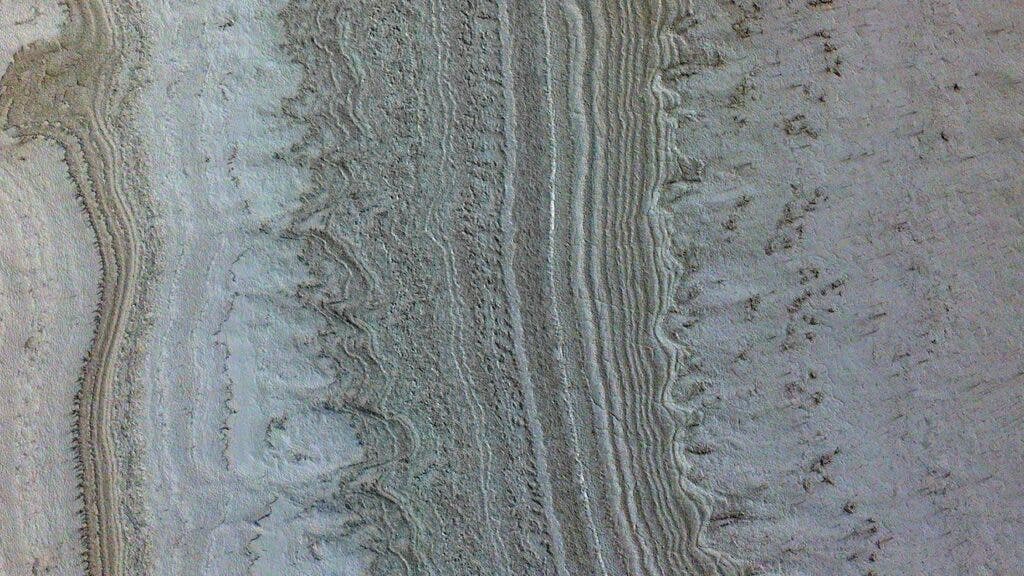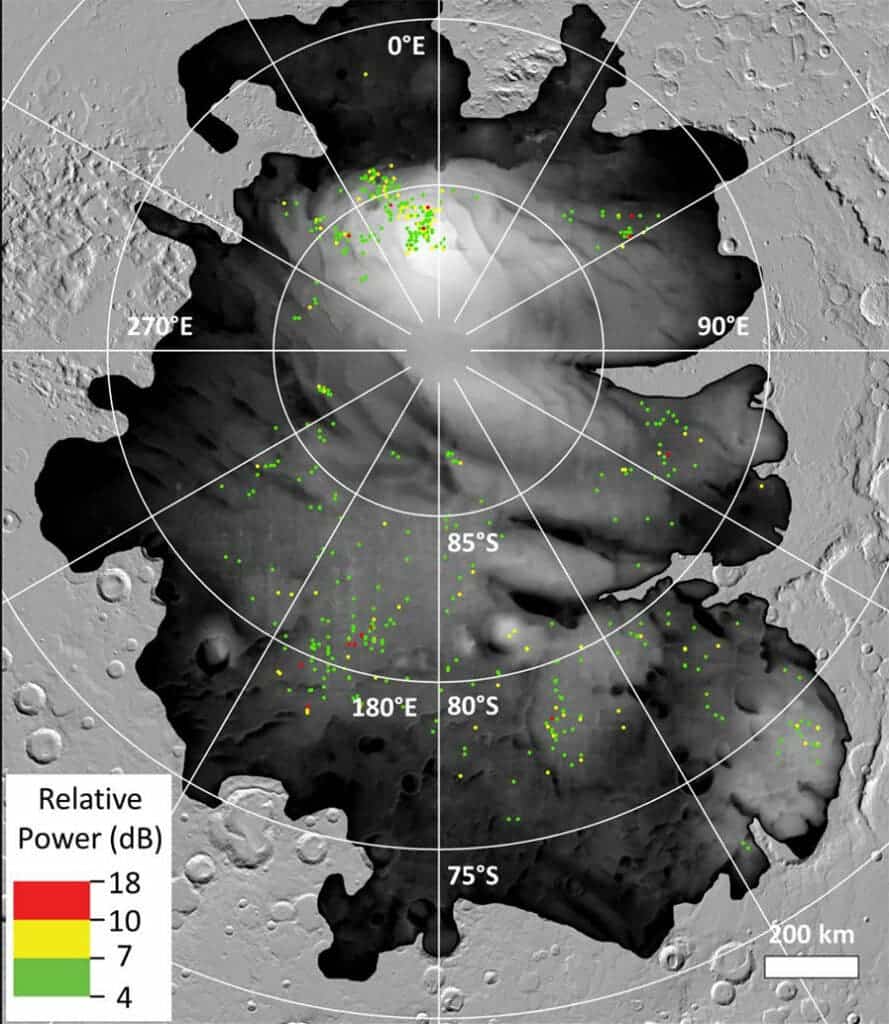
Where there’s water, there’s life — but Mars may not be as watery as we thought. We already knew that liquid water can’t really last on the surface: it would evaporate in no time. We also knew that water ice is plentiful in some areas on Mars. But what about liquid water?
Based on observations in 2018, astronomers started to suspect that Mars may have underground lakes beneath some masses of ice. This was based on observations from a radar instrument aboard the ESA (European Space Agency) Mars Express orbiter.
The idea isn’t as crazy as it sounds. Earth also has a lot of underground water, and even frozen moons like Europa or Ganymede are thought to have large masses of subsurface water. Mars having a subsurface lake below its ice cap wouldn’t be all that weird — especially as the data seemed to back it up.
But the data may not back it up after all.

Radar instruments send out pulses of electromagnetic waves; the wave passes through different materials (in this case, the layers of Mars), and based on the electromagnetic properties of the material, a receiver captures the reflected waveform.
The initial analysis of this radar data showed some strong reflections, which researchers interpreted as bodies of water. But in a new study, Isaac Smith of Toronto’s York University now has a different idea.
Smith didn’t go to Mars or anything like that — he worked in a lab, freezing clays with liquid nitrogen, until they reached temperatures like those on Mars.

Image credits: York University/Craig Rezza
“The lab was cold,” Smith said. “It was winter in Canada at the time, and pumping liquid nitrogen into the room made it colder. I was bundled up in a hat, jacket, gloves, scarf, and a mask because of COVID-19. It was pretty uncomfortable.”
The clays in this case are called “smectites” — a type of rock formed by liquid water long time ago. He then subjected them to radar instruments similar to those used on Mars, to see their response. It was exactly like what the Mars Orbiter observed.
In a recent paper published in Geophysical Research Letters, researchers found that many of the “water” signals came from areas close to the surface, where it should be too cold for water to remain liquid, even when mixed with minerals commonly found on Mars (that can lower freezing temperature of water).

So we know that it’s probably too cold for liquid water to exist in those areas, and we have another likely candidate that could be responsible for the signal. Although it’s not yet possible to directly confirm whether what was on the radar data was liquid water, smectites, or maybe even something else, water is looking less and less likely.
But this is a win for science. Ultimately, the fact that researchers are able to derive so much information about a different planet, working with so little data, is remarkable.
“In planetary science, we often are just inching our way closer to the truth,” said Jeffrey Plaut of NASA’s Jet Propulsion Laboratory. “The original paper didn’t prove it was water, and these new papers don’t prove it isn’t. But we try to narrow down the possibilities as much as possible in order to reach consensus.”






